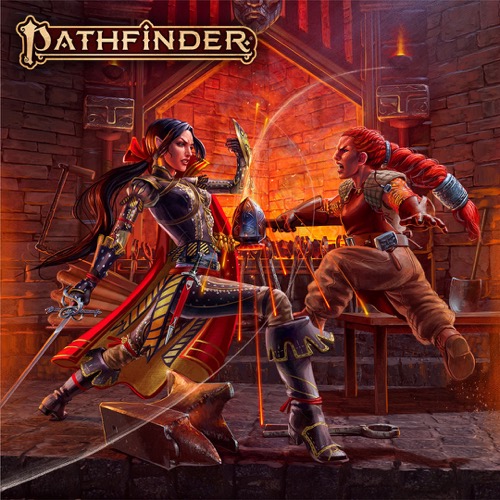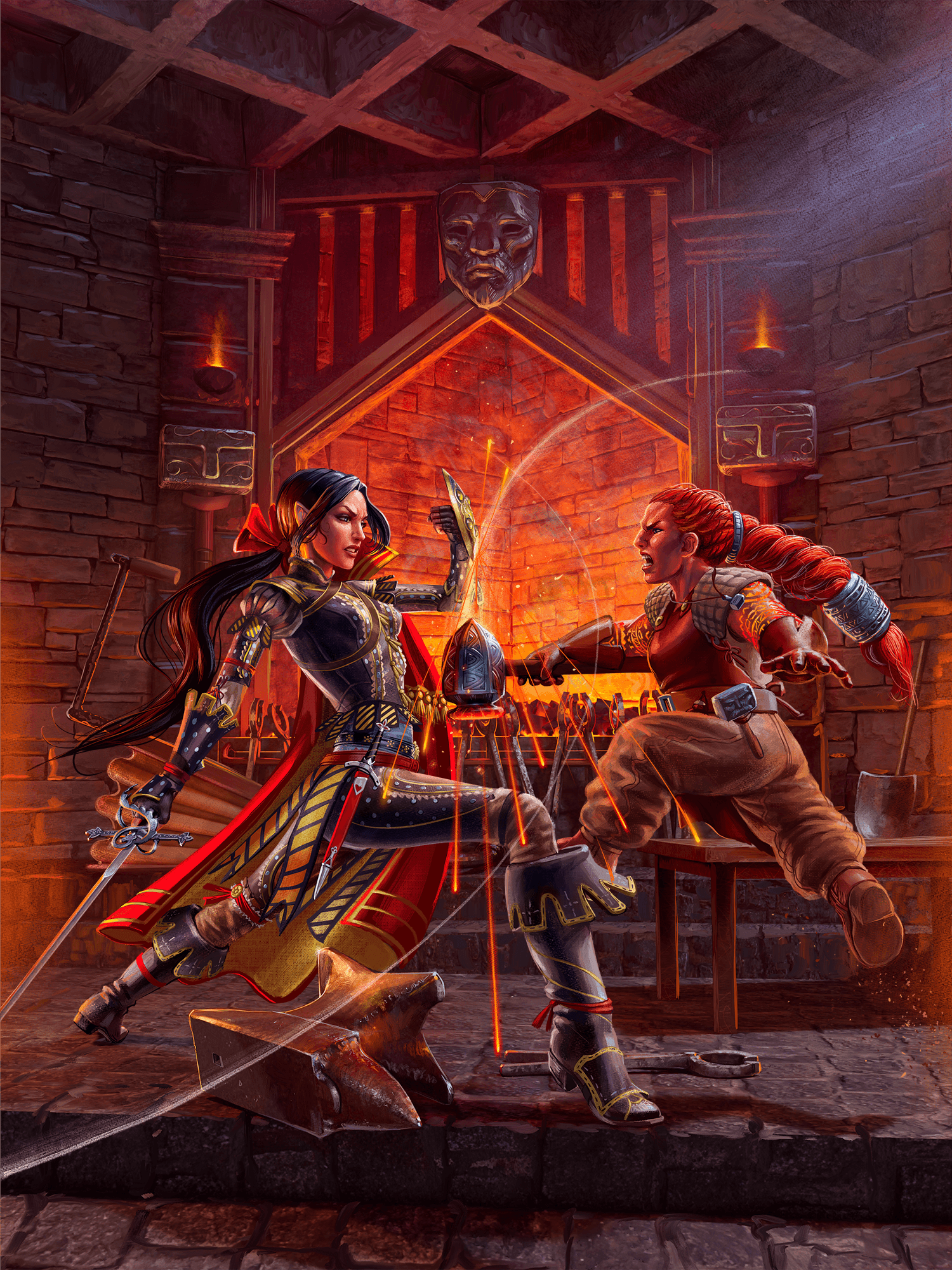The swashbuckler is swinging into Pathfinder Player Core 2 with a fresh coat of paint to show off their style and swagger like never before!
Swashbucklers fight fast on their feet with flair. They dart between foes, gaining and expending panache to execute powerful and flamboyant finishers. When a swashbuckler hits their stride and lands their rolls, they create wonderful, memorable moments on the battlefield. However, this could be difficult to do consistently based on the encounter. In some low-threat encounters, swashbucklers easily dance around the battlefield, able to gain and use panache freely, but in severe and extreme fights, they often struggled to gain panache and use their class abilities. Additionally, many swashbucklers heavily relied on Tumble Through as their primary way to obtain panache, which led to less satisfying uses of Tumble Through instead of an exciting way to move dynamically around the battlefield.
Our primary aim with the swashbuckler’s remaster was therefore to increase the consistency of the class to allow for more stylish moments.
One way we’ve done this is through the new bravado trait, which you’ll see in several places in the class. Bravado is not only a bit more reliable for getting into panache, but the trait also lets us give more actions the ability to grant panache, allowing for more diverse options in combat. For instance, many of your swashbuckler styles might state that certain actions gain the bravado trait.
Bravado: Actions with this trait can grant panache, depending on the result of the check involved. If you succeed at the check on a bravado action, you gain panache, and if you fail (but not critically fail) the check, you gain panache but only until the end of your next turn. These effects can be applied even if the action had no other effect due to a failure or a creature's immunity.
Not all swashbucklers fight with honor, though. We’re introducing the new rascal swashbuckler style in the remaster! Rascals aren’t afraid to use underhanded tactics on the battlefield to show off their skills and thoroughly embarrass their foes with a Dirty Trick or two. They do what they need to do to gain the advantage and are happy to let their opponents drop their guard before striking fast, leaving their foes in their dust before finishing them off, perhaps with a Twirling Throw.
Twirling Throw [one-action] — Feat 4
Finisher, Swashbuckler
Prerequisites Flying Blade
Your thrown weapons seem to defy physics as they soar through the air and spin back to you after a strike. Make a thrown weapon attack, ignoring the penalty for making ranged attacks within the second and third range increment. The weapon returns to your hand after the attack unless you critically failed on the attack roll.Pathfinder Player Core 2 is full of exciting remastered ancestries, classes, spells, and more to allow you to truly make the most of your games. Look forward to more previews of other remastered classes in the near future!
Joshua Birdsong (he/him)
Designer
Player Core 2 Preview: The Swashbuckler, Remastered
Wednesday, June 26, 2024








